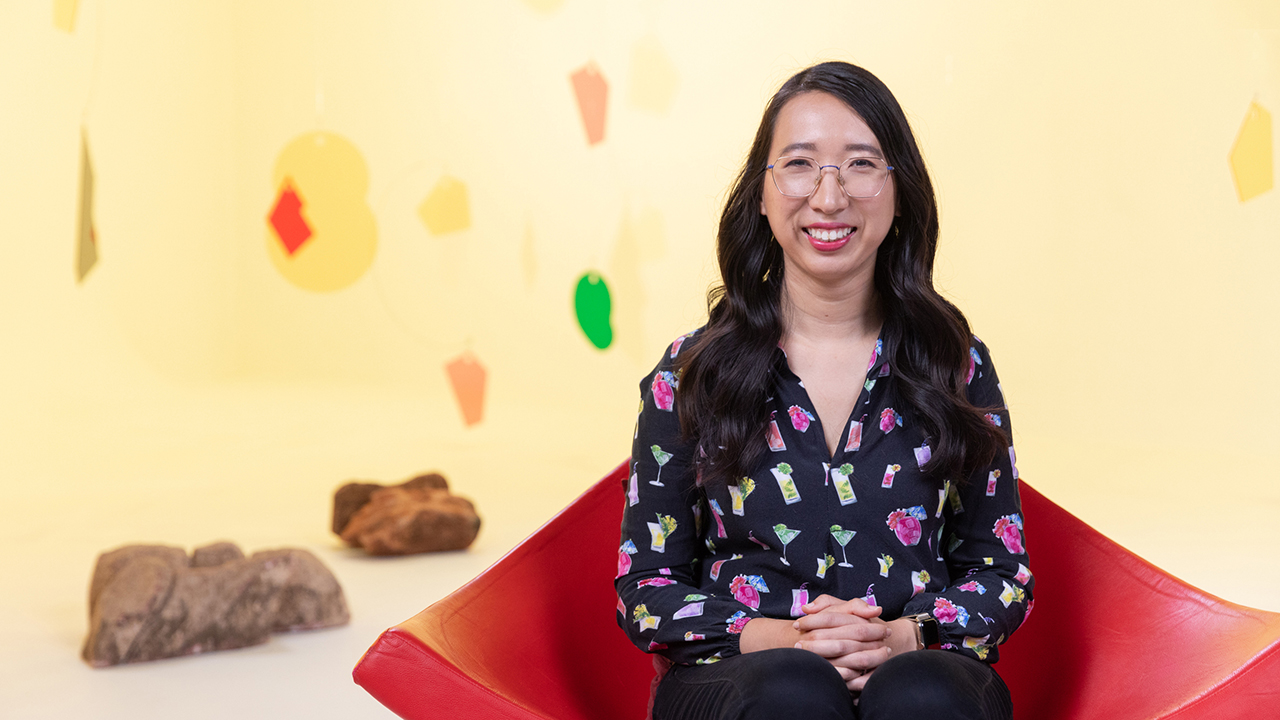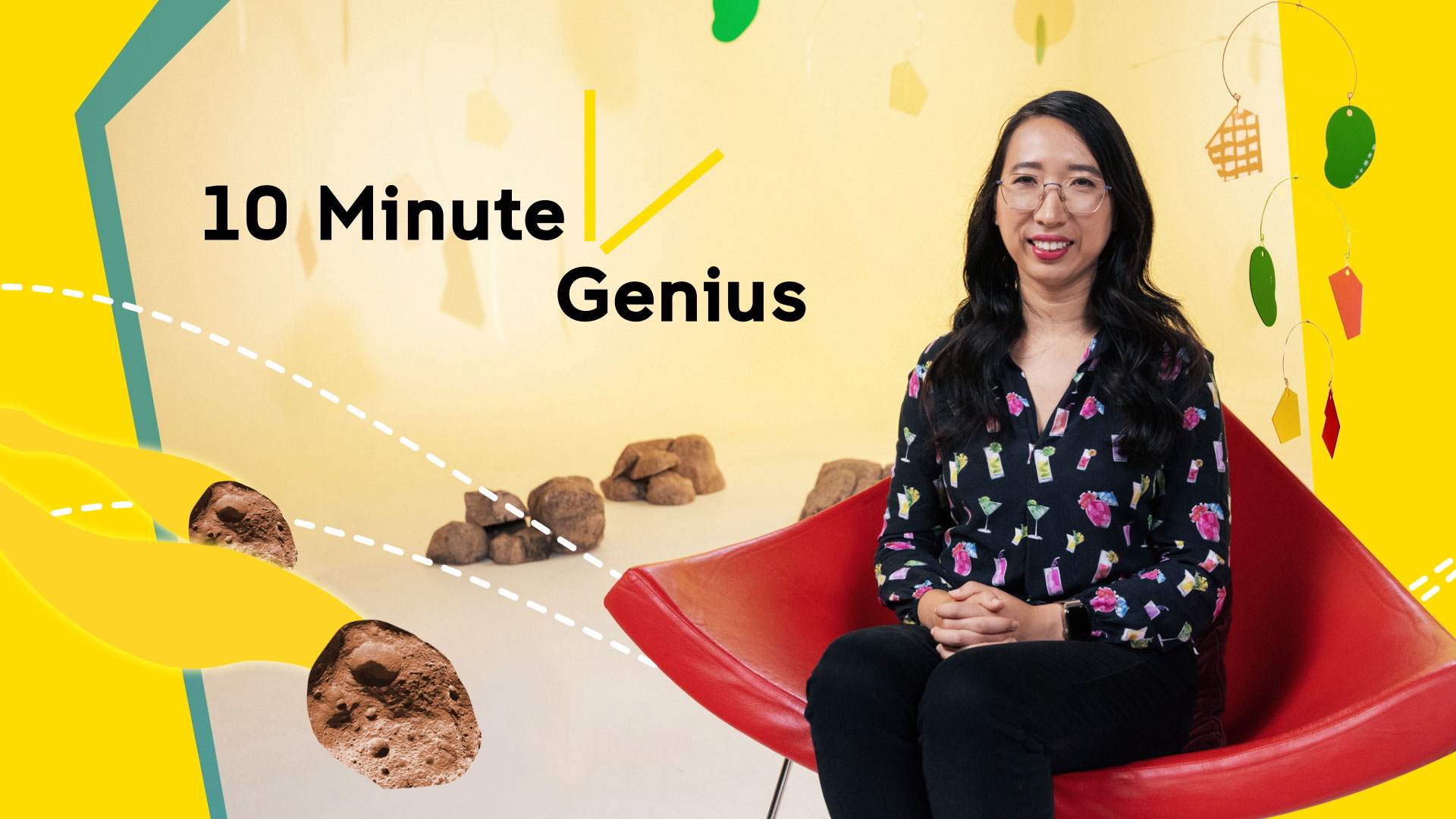Anna Wang | Soap to Cells and the Origins of Life
By always asking "why" and "how", researchers in fundamental science find new, creative ways to solve problems that help other parts of science in unexpected ways.
The age-old question, “how did life begin” has plagued scientists for generations. For geologists the answers lie in rocks, for biologists it’s our evolutionary process, while for astrophysicists it’s in the stars but for physical chemists the keys to unlocking the mystery lies in determining how simple chemicals could have assembled into something resembling a cell, 4 billion years ago. And unfortunately, because physical chemists can’t just hop in a time machine and set the coordinates for the time when our Earth was a hostile planet covered in volcanoes, they need to examine the next best things – really really old meteorites. Meteorites give us clues as to the types of materials that could have been brought to our young uninhabitable Earth from elsewhere in the universe, and what could be made on Earth in the absence of biology.
In just 10 minutes, or roughly the time it takes for a meteorite to burn up in the earth’s atmosphere, Anna Wang will endeavour to answer the question of how life began using some of the oldest cells we have on the planet.
ABOUT 10 MINUTE GENIUS
In this sprawling digital age where a universe of information is accessible within seconds, it's easy to be paralysed by the simple question of where to begin.
Introducing: Ten Minute Genius, a series of short talks designed to create a space in which you can engage with new ideas. We have curated a collection of material scientists, philosophers and maths lovers to help you make some sense of this chaotic information vortex. And because you’re busy, all we ask of you is just ten minutes.
Transcript
UNSW Centre for Ideas: Welcome to the UNSW Centre for Ideas podcast – a place to hear ideas from the world’s leading thinkers and UNSW Sydney’s brightest minds. The talk you are about to hear forms part of the 10 Minute Genius series, a curated collection of UNSW’s thinkers, dreamers and envelope pushers helping you make some sense of the relentless information vortex in which we live. In under 10 minutes, or roughly the time it takes for a meteorite to burn up in the Earth's atmosphere, physical chemist Anna Wang will endeavour to answer the question of how life began using some of the oldest cells we have on the planet.
Anna Wang: On the 28th of September 1969, a meteorite exploded in the atmosphere over the small town of Murchison, Victoria, right here in Australia. What scientists found when they examined the pieces of rock from the meteorite, became the basis for my work today as I attempt to demystify the origins of life.
Hi, I'm Anna Wang, and this is 10 Minute Genius. Believe it or not, by the end of this short video, you'll see what the Murchison meteorite has to do with my research on soap bubbles, cells, and primitive life. So how did life on Earth begin? That's one of the biggest questions of science, and it's the one I spend my time trying to help answer. Finding the answer to this question requires a truly interdisciplinary approach with researchers from a wide range of disciplines putting their minds together, geologists uncover the secrets written in really old rocks. Biologists are experts on all things living today, and the evolutionary processes that got us here and astrophysicists have explained what molecules important for life could have been made in space. Me, I'm a physical chemist, working with colleagues in all these fields and more.
For the first single celled life forms to exist, a lot of different elements would have had to fall into place. Quite literally, as a chemist tackling this problem, I need to know what elements and molecules existed at the time on earth when life first arose, and then I need to figure out what conditions could allow the chemical soup that existed before life to produce and assemble the many parts that make up a single living cell.
Let's travel back in time to where it all began. Over four billion years ago, planet Earth was a very different place. There were volcanoes everywhere, there was no oxygen and therefore no ozone layer. Instead, the atmosphere had a cocktail of gases that are lethal to most life forms today – gases like methane, hydrogen cyanide, rotten egg gas, and carbon monoxide. At this time, the Earth was being bombarded with extra-terrestrial material, maybe even like the Murchison meteorite but with a thinner atmosphere, space rocks would have burned up far less back then, than when they enter our oxygen-rich atmosphere today, and this meant they would have also hit the surface of the earth with much more force.
The meteorite headed for Murchison exploded into many smaller rocks that landed over an area around 35 square kilometres. If the Murchison meteorite had sped toward Earth four billion years ago, before life had transformed the atmosphere, the impact would have been far more dramatic. At that time, our Earth would have been an incredibly hostile place and yet, amidst the chaos, something incredible happened, something that would change the destiny of Earth and totally reshape its future, what happened was from a soup of chemicals on early Earth, chemistry brought forth biology. Meteorites give us clues as to the types of materials that could have been brought into this chemical soup from elsewhere in the universe and what could have been made in the absence of life itself.
When a scientist called Dr John Lovering collected the Murchison meteorite pieces in 1969, he described a distinct aroma saying that they smelt just like methylated spirits – very strong. This cell indicated that unlike most meteorites, this one was packed with organic molecules, these are the ingredients essential for life. Every living thing on earth is made up of cells enclosed in a cell membrane from single celled organisms like bacteria and yeast, to multicellular organisms, like the plants that we eat, and you and me, even some viruses have cell membranes. Cell membranes protect the cell and give it its shape, while allowing important molecules like nutrients to move in, and waste to move out of the cell. Among the many molecules found on the Murchison meteorite, was a perfect candidate that might have formed a primitive cell membrane and that was fatty acids, these long chain molecules are similar to something that you're already very familiar with soap, soap bubbles, and the cells that make up our bodies and all living organisms have something in common. It's called a bilayer.
Bilayer means two layers, and the edges or the surface of a bubble have a layer of water between the two layers of soap molecules with the hydrophilic, or water loving and pointing towards the layer of water, while the hydrophobic, in other words, water hating and pointing outside the cell membrane is made up of what's called a lipid bilayer. These phospholipids which are made up of two long chain molecules, called fatty acids joined together, they line up around the cell membrane in a very similar way to the soap molecules on a bubble.
Australian scientists have already shown that soap molecules can form vesicles, which are round structures with a similar shape to a cell membrane. We are now trying to build on these discoveries to build primitive artificial cells that mimic lifelike qualities. What working with soap has taught us so far, is that it is possible to get these soap vesicles to survive in unstable temperature, salinity and pH environments, and even obtain nutrients so that they can grow and divide all things the first living cell would need to do. The next steps are to coordinate the copying of genetic material within a self-replicating soap vesicle then we have the start of something that may be capable of undergoing Darwinian evolution.
Going from soap to cells isn't only about answering the big blue-sky questions about the origins of life, the discoveries we make and the techniques we develop are being used by other fields because so many fields of research from food science to drug delivery, are connected by the science of lipid membranes and soap. Working in this field has also taught us clever ways of doing chemistry and researchers who are trained in origins of life research, are now contributing their skills towards making better therapeutics and vaccines – and that is the power of fundamental science in motivate scientists to get to the bottom of something by repeatedly asking why, and how researchers in fundamental science end up finding new creative ways to solve problems that help other parts of science in unexpected ways. Just as you would never skimp on the foundations of a house to afford nicer trim for the windows, we should think twice about rushing or worse, skipping fundamental research. Our future depends on it and you may just find out something super cool along the way. When the emergency meteorite exploded in our atmosphere in 1969, it didn't just open our eyes to life's primitive past. It also sends a ripple of possibilities into our future on Earth too.
UNSW Centre for Ideas: Thanks for listening. For more information visit centreforideas.com and don't forget to subscribe wherever you get your podcasts.

Anna Wang
Anna Wang is a Scientia Senior Lecturer and ARC DECRA Fellow in the Faculty of Science at UNSW Sydney. There she leads research within the School of Chemistry, at the intersection of physics, chemistry and materials science, to answer questions about soft matter and how they shed light on the origins of life. By studying soft matter, Anna provides insights into the science of the everyday, from personal care products in the bathroom to the microfoams in our cappuccino, but this research also sheds light on basic science like the principles behind self-assembly and how cell-based life started on Earth. She completed a postdoc at Massachusetts General Hospital as a NASA Postdoctoral Program Fellow in Astrobiology, and a PhD in Applied Physics at Harvard University.

